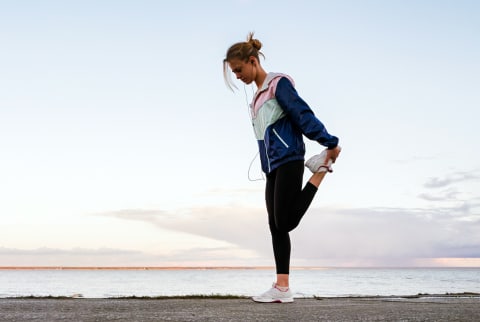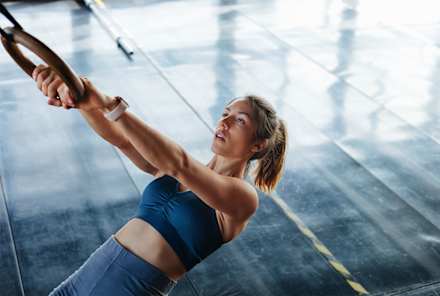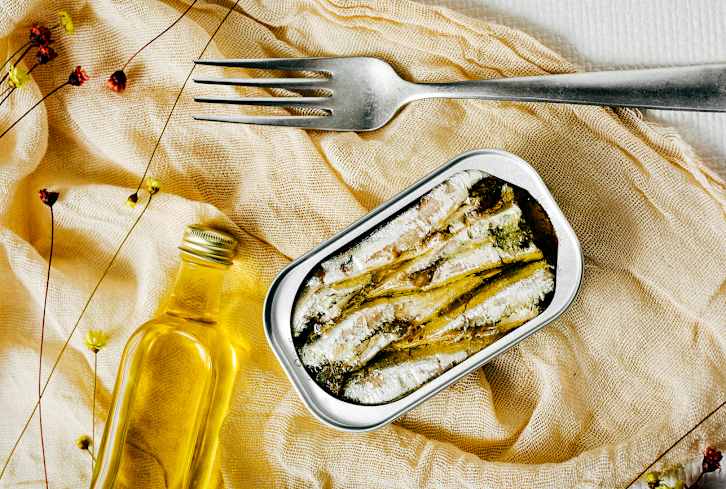Advertisement
How Vitamin D & Calcium Work Together To Support Healthy Bones*



When you think about vitamin D, sunshine and strong bones probably come to mind. And while we've learned for decades that vitamin D actually has a whole slew of whole-body benefits (including supporting your immune system and promoting proper thyroid function, among others), helping to keep your bones healthy and strong is certainly still a foundational role of this fat-soluble micronutrient worth raving about.* (Especially considering we lose bone mineral density as we age1!)
One of the major ways in which vitamin D does so much good for your bones is through its relationship with calcium, the major structural building block of your bones and teeth. And while people have typically heard that you need vitamin D to absorb calcium, the relationship is actually a little more nuanced (in a good way, we're not talking about an on-again-off-again ex here) than that.*
Here's what to know about how vitamin D and calcium work together in your body—and why it's so important to get enough of the sunshine vitamin if you want to maintain healthy bones for life.*
How vitamin D and calcium tag-team in the body.
In its active form in the body (called calcitriol), vitamin D is actually a hormone (how cool is that?) and works to maintain proper levels of calcium2 circulating in the body needed to mineralize bones, facilitate muscle contraction, allow blood vessels to dilate, support hormone secretion, and maintain proper nerve signaling.*
"It's about the body wanting to maintain homeostasis (aka a certain, balanced amount) in calcium levels," explains registered dietitian and mbg Collective member Jessica Cording, M.S., R.D., CDN.
"This means that 24/7 your body is trying to return to its baseline," adds dietitian Gabrielle Tafur, M.S., R.D., LDN. Vitamin D comes into play by ramping up calcium absorption as needed to maintain the levels needed in the blood, in a relatively tight range.*
Throughout the last few decades, researchers have come to understand that vitamin D makes this happen in three ways.
The first (and central method): by boosting calcium absorption in the intestines (from the food, beverages, and supplements we consume) in order to shuttle the calcium you get from these inputs into the bloodstream. "The principal function of vitamin D in calcium regulation is to increase calcium absorption from the intestine, which is the main site of absorption for most micronutrients,"* explains Tafur.
Basically, "when serum calcium levels are low, vitamin D stimulates an increase in calcium absorption from the intestines so calcium doesn't get leached from the bones,"* Cording adds. It's smart like that.
Just how vitamin D does this is also a little more complex than meets the eye, and research suggests that it gets the job done by interacting with intestinal stem cells, regulating cells that affect the barrier function of the intestinal wall, and more.*
In addition to this primary intestinal action, vitamin D can also work to pull calcium from the bones3 and (along with parathyroid hormone) signal the kidneys to retain calcium2.*
As mbg's vice president of scientific affairs Ashley Jordan Ferira, Ph.D., RDN, summarizes, "The vitamin D/calcium relationship has been simplified to absorption in the gut. In reality, this smart vitamin is proactively multitasking on our behalf to ensure calcium homeostasis through multiple, simultaneous mechanisms in the body."*
Ferira goes on to say that this vitamin-mineral partnership is critical because calcium is required by cells throughout our entire body. "Calcium is the most abundant mineral in the human body. It's the cellular gatekeeper for cellular signaling and communication. Pragmatically that looks like strong bones, muscles contracting (including your heart!), nerves sending impulses, and so much more."*
How lack of vitamin D affects calcium and health.
Because vitamin D plays such an important role in regulating how much calcium the body has available to use, bone health can pay the price when you fall short on the sunshine vitamin.* "Even if you're taking in enough calcium, it is ineffective if you're deficient in vitamin D,"* Tafur notes.
In fact, by limiting active calcium absorption, vitamin D deficiency significantly affects bone metabolism3, the continuous cycle through which bones turn over and grow (lay down mineral architecture). Over time, this can contribute to suboptimal bone health4.*
In order for vitamin D and calcium's relationship to function properly, it's important to maintain a balanced intake of both nutrients, says Tafur.* And as Ferira points out, "calcium is one of the most common mineral gaps in our diet, with close to 40% of American adults5 failing to consume adequate amounts from diet alone."
While dairy is one of the richest and most bioavailable sources of calcium, luckily for nondairy eaters, you can score calcium from a variety of leafy greens—as well as broccoli and salmon. And a targeted supplement is prudent for some folks to ensure they meet daily calcium needs.* And don't forget, vitamin D is pretty darn hard to get in ample amounts through food, though you'll find some in fatty fish, so the case for daily D3 supplementation is robust.*
The takeaway.
While getting ample calcium (adults need 1,000 to 1,200 milligrams per day6) is important for health for a variety of reasons, you also need ample vitamin D daily to support a proper balance of calcium in the body.* Most people need a minimum of 3,000 IU of vitamin D3 per day to simply avoid vitamin D insufficiency, but 5,000 IU of D3 daily may be the ideal to achieve and maintain vitamin D sufficiency throughout life.*
6 Sources
- https://www.ncbi.nlm.nih.gov/pmc/articles/PMC3383520/
- https://www.ncbi.nlm.nih.gov/books/NBK56061/#ch3.s11
- https://www.ncbi.nlm.nih.gov/books/NBK56060/
- https://pubmed.ncbi.nlm.nih.gov/21872800/
- https://www.ncbi.nlm.nih.gov/pmc/articles/PMC5579642/
- https://ods.od.nih.gov/factsheets/Calcium-HealthProfessional/#en1



















